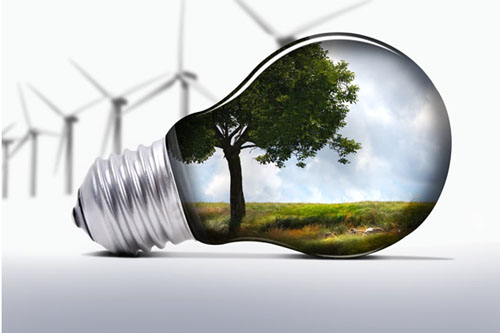The dark side of energy-saving bulbs
- By Li Yang
 0 Comment(s)
0 Comment(s) Print
Print E-mail China Daily, March 12, 2013
E-mail China Daily, March 12, 2013

When Thomas Edison first showed his filament lamps to the public on Dec 31, 1879, in Menlo Park, California, he said: "We will make electric light so cheap that only the rich will burn candles."
More than 130 years on and he might have said something similar about compact fluorescent lamps being so cheap that only the rich will still use incandescent bulbs.
Since 2008, the authorities have subsidized the use of CFLs, as they want to phase out the use of incandescent bulbs by 2016. About 150 million CFLs are now sold with subsidies in China each year.
The authorities are subsidizing CFLs because electricity consumption for lighting accounts for 12 percent of China's total energy consumption, and if all incandescent lights are replaced by energy-saving CFLs the country will save 48 billion kilowatt hours of electricity each year. This equates to a reduction of about 48 million tons of carbon dioxide.
Nevertheless, while they save energy, CFLs also have their dark side.
It has been estimated that more than 1 billion CFLs were scrapped in 2006, and, thanks to the administrative subsidies, the figure has been rising fast ever since. But worryingly, there is no specific disposal system for used bulbs in China. Most waste CFLs are smashed and buried in landfills in suburban areas.
This is disturbing because each CFL that is dumped contains about 0.5 to 10 milligrams of mercury, sometimes more in poor quality bulbs, and research has shown that 1 mg of mercury can pollute as much as 360 tons of groundwater, as well as the adjacent soil. Mercury can produce a range of adverse human health effects, including permanent damage to the nerve system, in particular the developing nerve system, and brain damage. It can also be transferred from a mother to her unborn child.
The central government needs to take immediate action to address the mercury pollution from CFLs. Prevention and control will be more economical and effective than treatment.
First, the country should establish a collection system for used CFLs as soon as possible.
In Sweden, the sellers of energy- saving bulbs have the responsibility to collect used ones. In Germany, communities are the basic unit to collect them. In Japan, social organizations collect 93 percent of the waste bulbs and the manufacturers are responsible for the remaining 7 percent.
In China, communities and producers should collect the waste bulbs and both public refuse processing sites and the manufacturers of CFLs should have the ability to handle the waste bulbs, with the producers the main processors.
However, the processing lines are expensive and there are no compulsory rules or regulations requiring manufacturers to collect the waste lamps, despite the lamp's being officially classified as hazardous waste in China.
At present China has 2,000 large-scale CFL production enterprises. But only three of them have professional processing lines to handle waste bulbs.
Second, the environmental protection authorities, NGOs and media should launch a nationwide publicity campaign to raise public awareness of the environmental implications of the mercury in energy-saving bulbs so that people dispose of their used bulbs properly.
Third, the government should adjust its subsidies for CFLs, except for families living on subsistence allowances, and invest the money in a disposal system for the bulbs or subsidize enterprises to dispose of them.
The government should also encourage enterprises to improve their efficiency and pursue technological innovations to help reduce the mercury content in the bulbs.
The State quality inspection authority should revise the national standards for energy-saving bulbs according to technology progress.
At present the national standard for the maximum mercury content in CFLs for residential use is 5 mg. In the CFLs exported to the European Union each bulb contains 2.5 mg at most, as this is the maximum permitted under EU standards.
Last but not least, as just over 60 percent of energy-saving bulbs fail to meet the national standards at present, the State quality inspection authority must strictly enforce the quality standards to guarantee the bulbs meet the safety requirements.
The author is a writer with China Daily. E-mail: liyang@chinadaily.com.cn





